When it comes to training, most people tend to trend in the direction of complexity and novelty. Whether that’s an athlete finding fancy movements they think will make a favorite pro-athlete look cool on social media or a coach wanting to show how competent they are in shaking things up, doing newer or more difficult exercises often wins out because they’re mistaken for sophistication. But as William of Occam said, “It is vain to do with more what can be done with less”—particularly when it’s recorded in gym mirror selfies. An example would be Simple & Sinister, Pavel’s classic program that comprises just two exercises–the kettlebell get-up and swing. I had a similarly minimalist approach in mind when I was asked to help prepare All-Star pitcher Carlos Rodón for a crucial contract year.
By the time the call came to expand my role in this way, I had already earned Carlos’s trust while acting as his chiropractor and acupuncturist. That meant that I had not only built credibility with him, but also had a deeper insight into his existing regimen and how it related to his performance and overall wellbeing. I was leaning toward not rewriting Carlos’s entire program, or even the majority of it. Why start from scratch when most of what he was already doing had supported his rise to MLB All-Star status? With a professional athlete, there’s always a risk of doing more harm than good if you change too much, so it was more a process of finding the least that could be altered or added to prepare him for the long, grueling 162-game regular season and hopefully, the playoffs.

Performing a Whole-Life Screen
The first few days I spent with Carlos in the offseason involved taking a back seat and observing his lifestyle and daily routines. I planned to take him through the Functional Movement Screen (FMS) to assess his capabilities and limitations, but first I wanted to conduct an informal whole-life screen to see where physical preparation fit. Many fans might assume that a pro-athlete lives a glamorous life full of parties, travel, and all the luxuries portrayed in movies and TV shows. But in reality, most have the same kind of responsibilities and everyday tasks as the rest of us.
In Carlos’s case, he has a wife, Ashley, and a young son and daughter. As soon as the grind of the season is over, he retreats to his compound in Indiana and tries to spend as much quality time with them as he can. I soon saw that the kids could come running into his home gym at any point and that he and Ashley often train at the same time as a kind of “at-home” date night. Speaking of which, it became clear that Carlos could only train in the evening. The ninety-minute drive each way to his pitching facility (best case if there is no traffic or snow) and the time spent there would take up most or all of the morning. Then when he got home, as an involved dad and husband, he was fixing fences, chopping wood, and doing all the other things it takes to maintain his property. The rest of the day went by in the blink of an eye. And those were the times when he wasn’t off hunting.
Living such a full life meant that nighttime was the only option for Carlos’s training. Understanding the ins and outs of his daily routine didn’t merely allow me to figure out when to schedule his gym sessions, but also to paint a fuller picture of his overall load. Many of the activities he does on the family’s land wouldn’t be considered training, but swinging an axe, carrying a kill back from a successful hunt, and chasing two small kids around is still movement. Then layer in what Carlos was doing at the pitching facility, which increased in both volume and intensity as baseball activities ramped up and spring training got closer. Keeping this in mind I tried to create a total movement count that encompassed everything so we had a baseline to work with as we considered what might need to be changed or adapted in his evening training.
Another consideration was the environment. It was winter, so unless we wanted to go all “Rocky Balboa” in the snow and ice, training outside was off the table. It was also in the midst of COVID-19 pandemic supply chain issues, which would’ve made ordering and delivering new gym equipment problematic. Plus, Carlos’s house was under construction and his compound is very rural, so all we had to work with was his separate home gym. So, much like when I first started working with the ASU women’s golf team with space-saving kettlebells and TRX Suspension Trainers, we had to work with a fairly small space and train indoors with the gear Carlos already had.
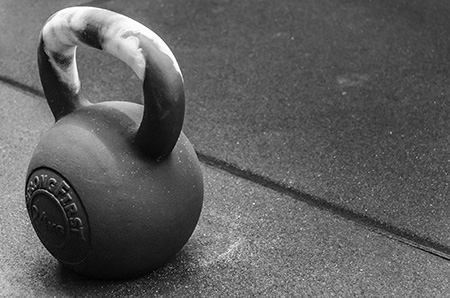
Making Minimal Program Changes
Once we’d worked through all these factors, it was time to take a closer look at his existing program. This was largely the product of a previous injury rehab. Carlos liked the predictability of knowing how long each session would take and when he would start and finish training each night but was open to doing whatever was necessary. This led me to look for essential movement patterns that might be missing and minimal alterations that could correct any issues Carlos was having. If I could design something that was convenient and congruent with his current lifestyle, he was much more likely to stay consistent—which is a philosophy I’ve seen work more often than not.
When I broke down his program, I found that it had a solid basis in what the Functional Movement Systems team calls the 4×4 Matrix. This means that Carlos was already doing exercises that were in non-weight-bearing (prone and supine), quadruped, kneeling, and standing positions. He was able to perform these well, as he scored all twos on the FMS. But what was lacking was an exercise that tied all four elements of that matrix together. Enter the get-up, which Gray Cook has said would be his choice if he could only do one exercise. The get-up is as close to a panacea as you can get for movement, combining mobility, strength, stability, and integration. In this particular context, it was one of the few missing links I found and so a perfect addition to Carlos’s program.

Gaming the Get-Up
We introduced the get-up differently in several stages. During the first quarter of the preseason, Carlos did full-range reps that included both stages of the movement—i.e., getting up off the ground (the get-up) with the kettlebell and then lowering himself back down to the starting position (the get-down). Once he’d shown that he was capable and confident with this, we soon added weight, going all the way up to 80 or 90 percent of his one-rep max. The thinking here was that a heavier weight not only built power, strength, and stability, but also considered the need for each session to be efficient. Higher weight required lower reps, so Carlos could still finish his workout without it going too long and, if it was earlier in the evening, before his kids ran into the gym to see him. Another benefit is that we were able to use the kettlebells that he owned, which didn’t take up much space.
Carlos was already familiar with the get-up as a solo exercise. What I tried to do in the preseason’s second quarter was target how he utilized it to mimic the kind of physiological demands that a game places on him. When pitching, he has between 15 and 20 seconds from when one pitch ends to when he must be back on the mound to fire another one at the batter. I started having Carlos use the get-up as active recovery between other exercises to represent a similar sequence. Once he finished a set of something else, he’d do a get-up. As his capacity increased, we started using a 20-second time limit and no matter where he was in the get-up, he’d stop, place the kettlebell down, and go back to the next set of the other exercise.
In the third quarter of the preseason, we started implementing get-up variations that took into account the total movement count I mentioned earlier, how Carlos was feeling during certain motions, and what other positions he was emphasizing in the rest of his training. So, if he had a heavy lower body day, we eliminated the high hip bridge from the get-up. Or if he was doing a lot of plyometrics and other explosive work, he reduced the weight or even did unweighted reps. Sometimes Carlos had trouble in the half-kneeling position with chops and throws, so we’d emphasize this section of the get-up. Or if he lost track of where his feet were as he fatigued, the bottom portion of the exercise provided a chance to increase his proprioception. A pitcher needs to align his body so he can get his weight over the back foot and get ready to drive and push forward. If Carlos lost this connection, I’d have him repeat going from the lunge into the standing overhead finish position and then back down again.
Sometimes Carlos struggled to keep his lower ribs down with his arm extended overhead. In which case, he’d finish the get-up in the front rack position with the kettlebell by his collarbone instead and focus on deep breathing, so he was more aware of his chest and ribcage. The angle of a pitcher’s arm to the ground is called arm slot, and impacts the velocity, spin, and other characteristics of his pitching. With this in mind, we used a small stick that is utilized in my K3 Combat Systems collaboration with Dr. Mark Cheng, StrongFirst Certified Master Instructor, so that Carlos finished an unweighted get-up with his arm straight up, at 45 degrees, or at 30 degrees. This also helped with shoulder stability and mobility. Another iteration was having him only do the get-up or get-down.
Putting Pullups in Place
The get-up was the only “new” exercise I added to Carlos’s existing training. We also decided to change another. He’d started doing chin-ups a couple of years before and because he enjoyed them and has a big work capacity, he built up to doing a lot of reps. There’s nothing wrong with the chin-up in the right context, but the combination of the movement pattern and high volume in the context of everything else he was doing started to create some soreness in his shoulders, arms, and elbows.
That was the last thing I wanted to see as he started ramping up for the upcoming season. I decided to have him switch his hand position on the bar and perform pullups instead of chin-ups. I hoped that doing so would shift the emphasis from his elbow, biceps, and anterior shoulder to his lats and core muscles. When Carlos is pitching, he’s mainly gripping the ball overhand, so why not mimic this on the bar instead of using an underhand grip?
It was key that he kept the enthusiasm he had for chin-ups with pullups, while changing the mindset of having to go hard and do a lot of them every time. I explained that we could increase total time under tension by extending the eccentric (lowering) phase of the pullup. While Carlos is more than strong enough to do all his reps unaided, we often used a thick band as a spotter just to be on the safe side.
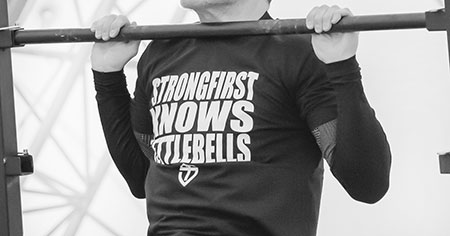
Evaluating Get-Up, Pullup, and Overall Program
There were several ways that we evaluated the results of adding get-ups, switching chin-ups for pullups, and slightly tweaking his programming. I’d be with Carlos for a few days, then away for a month, and back again, which provided a longer lens for evaluating his progress than the single snapshot we’d get from day-to-day. Each time I returned, we’d go through the FMS and Selective Functional Movement Assessment (SFMA) because I wanted to make sure that Carlos’s scores weren’t getting worse. In fact, I found that he was moving better, which I believe was mainly because the get-up integrates so many different patterns. Subjectively, Carlos also told me that he was feeling good—strong, powerful, fluid, and no longer sore in the shoulders. Perhaps this was partially due to pullups replacing chin-ups.
Above all, he was able to continue practicing his baseball skills as the offseason progressed without cutting into his family time or disrupting his lifestyle. Ultimately, Carlos isn’t compensated to train in the gym but to pitch–everything else is just preparation for him to do that well and sustainably over and over. If we define efficiency as the least amount of work needed to complete a desired task, then the get-up and pullup certainly fit the bill. And, going back to our theme of minimalism, they were simple to perform, easy to repeat, and undeniably effective in improving Carlos’s movement and readying him for the rigors of a pivotal year in his career.
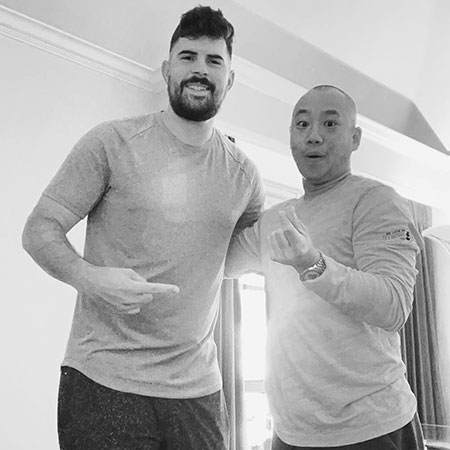

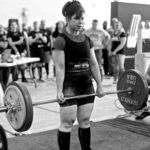
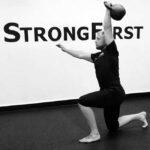
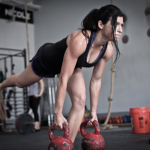


I love these kind of articles, Dr. Its great to think in terms of “one size fits all”, but obviously we’re all different with variables in out capabilities and desired outcomes.
I like reading about those micro-adjustments to facilitate a correction or enhancement for the trainee based on individual requirements.
Thanks for sharing.
A big “thank you” from a Yankees fan, Jimmy – looking forward to how Carlos will help the team. And oh, I almost forgot, thank you for a great article, too – it’s always insightful to listen to the best talk about the big picture, the smallest detail, and all the many levels in between.